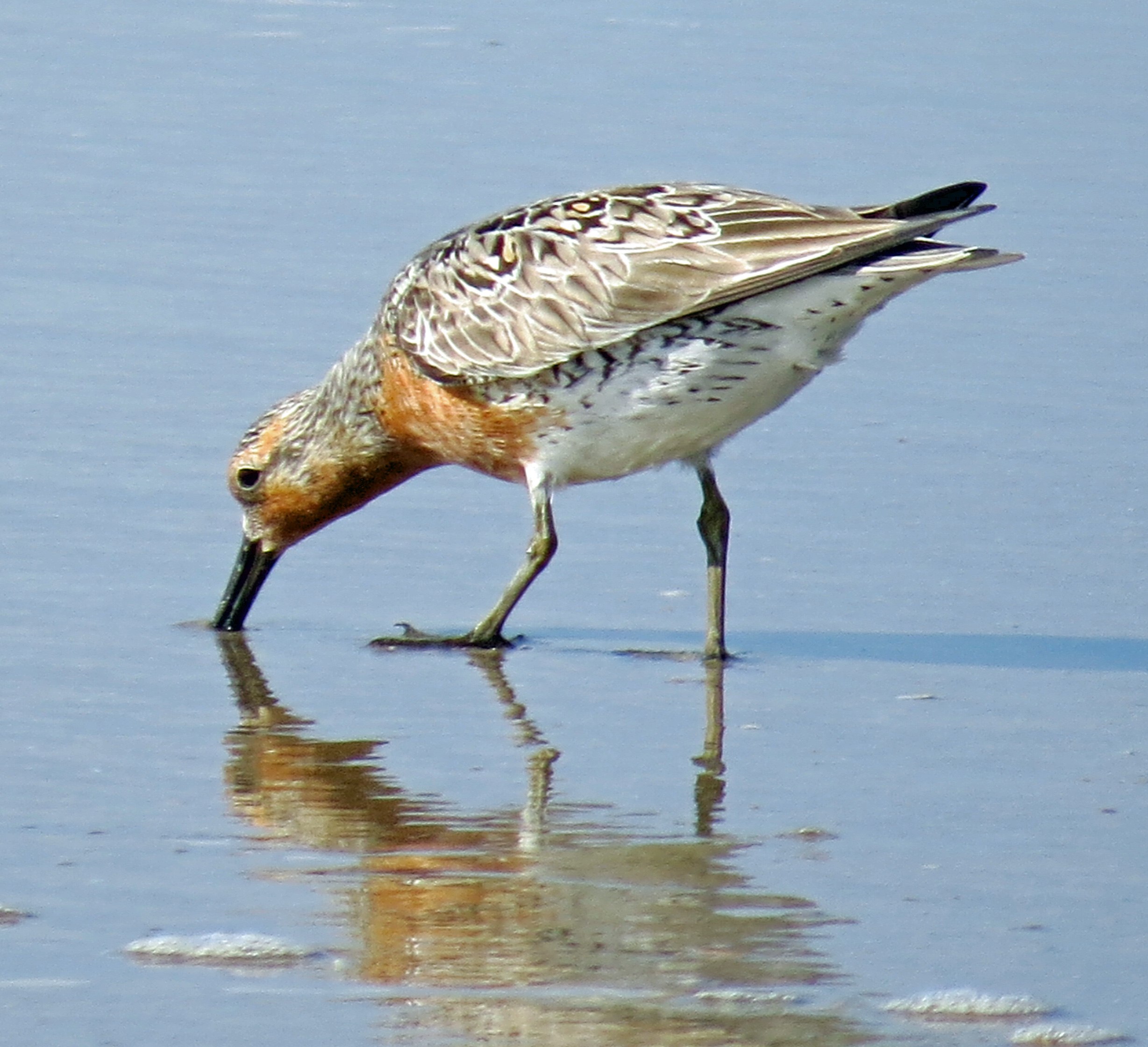
Reprinted from Ocracoke Observer
The red knot is an amazing bird.
Supporter Spotlight
Only about the size of an American robin and usually weighing under 5 ounces, it completes a marathon migratory flight.
Most of these knots, the rufa subspecies, winter in Tierra del Fuego, the southernmost tip of South America.
From there, their 9,000-plus-mile route to their nesting area in the middle- and high-Arctic areas of northern Canada is one of the longest migration routes for a bird. Although some red knots winter in the United States — with some most years on Ocracoke — Florida has the highest numbers.
These incredible migrants are also at risk of extinction, and information about their migration through North Carolina may help with population recovery efforts.
These shorebirds became a news story this spring when the annual red knot survey in the Delaware Bay region noted greatly diminished numbers.
Supporter Spotlight
This bay is a major staging area since red knots feed primarily on the normally plentiful horseshoe crab eggs before resuming their migration to the Arctic.

The dismal numbers — approximately 7,000 reported in the Delaware Bay area — signaled a significant decline in their numbers, which is about a third of those counted just last year in 2020 and the lowest since the early 1980s when the population was about 90,000.
Most of the blame has been attributed to overharvesting of horseshoe crabs for bait and biomedical products.
Other reasons for the precipitous drop cite climate change and sea level rise, coastal development, reduced food availability at coastal stopover areas, and human-related disturbances by vehicles, pets, low-flying aircraft and motorboats.
In 2020, horseshoe crabs did not arrive in the Delaware Bay when the red knots passed through due to unusually cold ocean waters.

Without this important food source, it is feared that many knots did not survive their long trek to the Arctic last spring, which would account for this year’s extremely low numbers.
Some theories for the low numbers suggest that when they do not find sufficient food sources one year, they may avoid those areas and find others.
Ocracoke Island and other areas of the Outer Banks have had good numbers of knots passing through in spring migration for the last couple of years.
According to information supplied by the National Park Service, a survey on May 12 produced a peak count of 1,100 red knots, surpassing the highest 2020 single-day count of 750.
The Core Sound area of the Cape Lookout National Seashore harbored 1,838 individuals on May 16, which, according to Meaghan Johnson, chief of resource management and science for National Parks of Eastern North Carolina, was the highest peak count in that area since 2016.
Significantly, observers noted a frenzied feeding behavior as the knots beefed up for their remaining long flight to the Arctic.
Considering the diminished numbers tallied in the Delaware Bay survey, the number of red knots passing through North Carolina becomes more significant, said Jon Altman, resource management supervisor at Cape Lookout National Seashore.
This view was shared by Larry Niles, an independent wildlife biologist who once headed New Jersey’s endangered species program. He has been monitoring the birds’ migration on the New Jersey side of Delaware Bay for the last 25 years. He has said that the best hope for the species to survive lies in a complete ban on harvesting female horseshoe crabs until the crab population recovers.
“We need to know more about red knot migration through North Carolina,” he said.
It is not known whether these Tarheel knots stop in the Delaware Bay region following their Outer Banks refueling stop. It is worth considering attaching radio geolocator tags on some to track their movements to help identify important stopover locations and the length of stays during their epic migration.
To read more about red knots, visit Birds of Ocracoke: the Red Knot.

This story is provided courtesy of the Ocracoke Observer, a newspaper covering Ocracoke island. Coastal Review is partnering with the Ocracoke Observer to provide readers with more environmental and lifestyle stories of interest along our coast.







